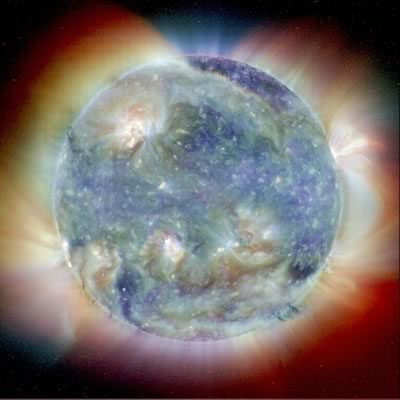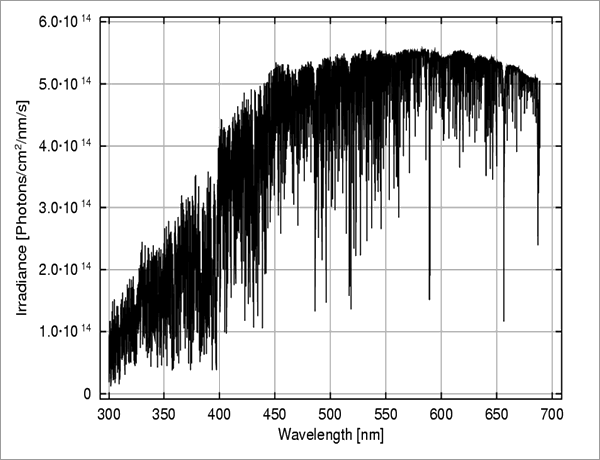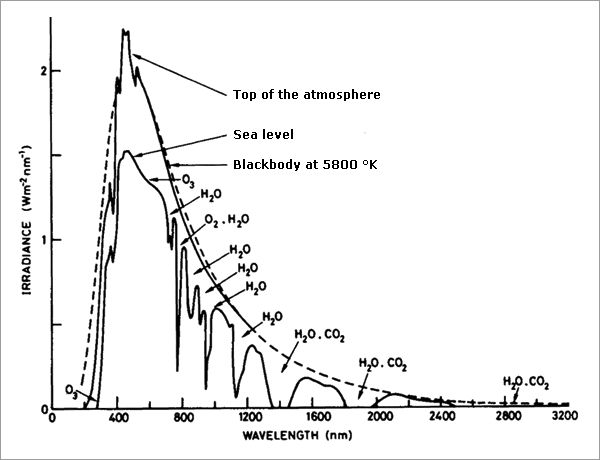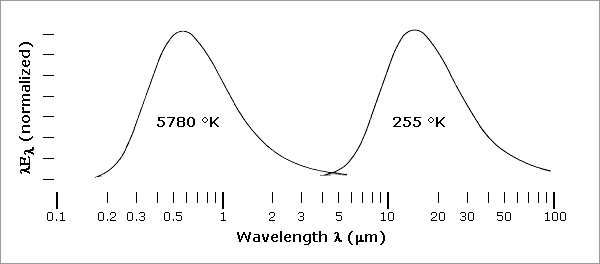The Sun is not a perfect light source for remote sensing applications.

Fig 2.2.1.1: Composite sun image from SOHO
Image courtesy of the Solar and Heliospheric Observatory (SOHO):
Composite image with three EIT wavelengths (171Å as blue, 195Å as yellow and 284Å as red) combined to show solar features unique to each wavelength.
The 171Å filter shows emission from 8 and 9 times ionized iron at about 1 million degrees C, the 195Å filter shows 11 times ionized iron at about 1.5 million degrees C, and the 284Å filter shows 13 times ionized iron at about 2.5 million degrees.
- Absorption in the solar atmosphere leads to the presence of a large number of Fraunhofer lines.
- The 11 year solar cycle affects radiation and is particularly relevant at short wavelengths λ < 300 nm.
- The radiation spectrum varies over the solar disk.
- The rotation of the Sun causes a Doppler shift.
- The intensity of the radiation varies as a result of changes in distance between the Sun and the Earth.

Fig 2.2.1.2: Fraunhofer lines in extraterrestrial solar radiation
Image: AT2-ELS
Solar radiation and the atmosphere
The solar spectrum can be approximated by a blackbody at a temperature of 5780 K.
In its passage through the atmosphere, solar radiation is attenuated by scattering and absorption.
- There is strong absorption by O3, O2, H2O and CO2.
- There are some atmospheric windows where absorption is small.

Fig 2.2.1.3: Spectrum of solar radiation (UV/vis/IR) outside the atmosphere and at sea level
Image: AT2-ELS
The spectra of solar black body radiation and the spectra of the thermal emission of the surface and atmosphere of the Earth have no significant overlap. This means that thermal emission can be neglected in the UV and visible spectral range.

Fig 2.2.1.4: Blackbody emissions from the Sun and the Earth.
Image: AT2-ELS